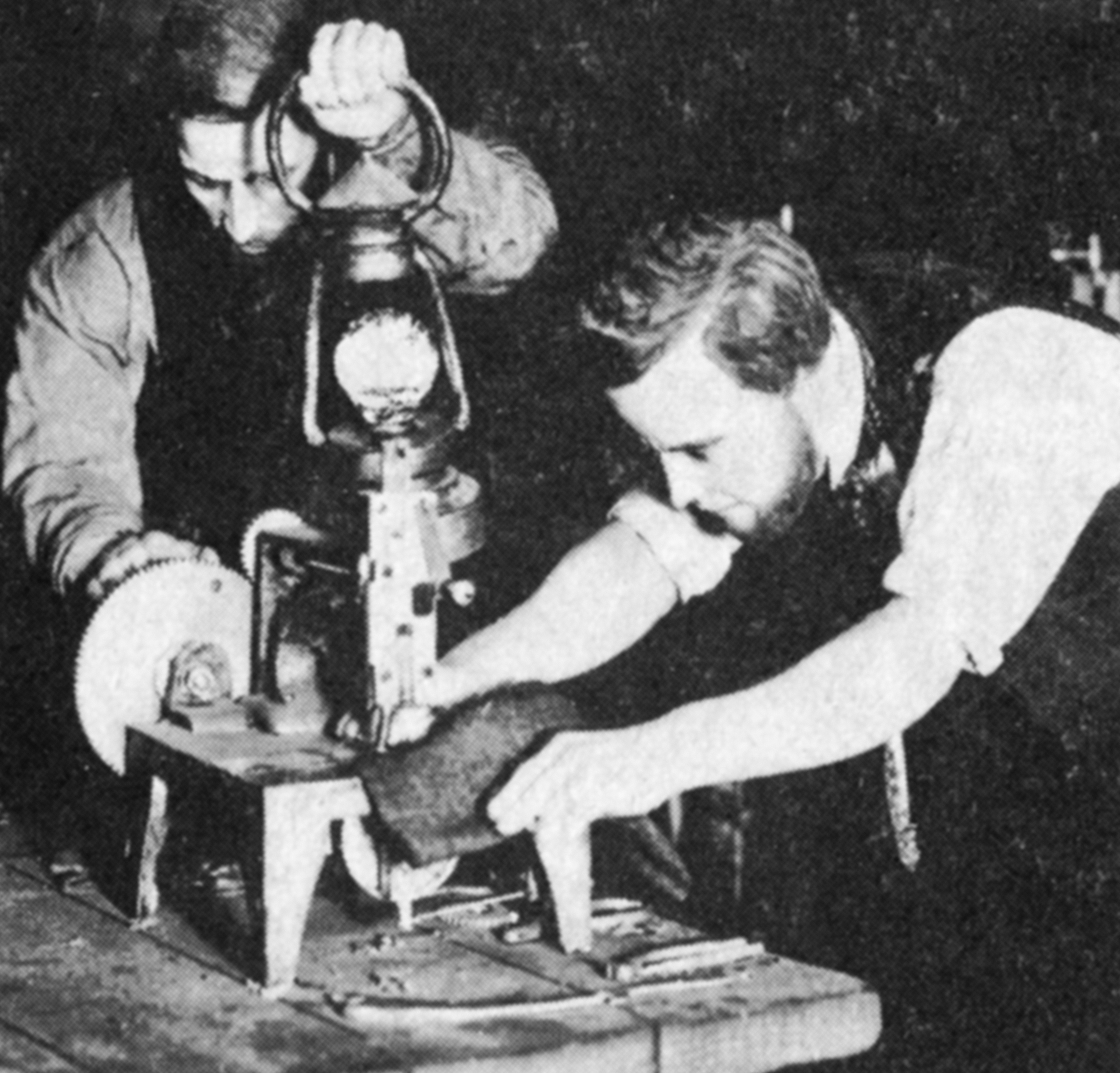Sewing machine is a machine that uses a needle to bind materials together with thread. It has lightened household work and helped families to have better and less expensive clothing than they might otherwise have had. In factories, it has helped make possible the mass production of clothing.
Kinds of sewing machines.
There are three main types of sewing machines for the home: (1) straight-stitch, (2) swing-needle, and (3) electronic. All three kinds are available in cabinet and portable models, and they may also have a free-arm, or open-arm, design for easier sewing around pant legs and sleeves.
Straight-stitch sewing machines are designed for simple sewing that requires no decorative stitching. Various attachments can be added to the machine to help make buttonholes, ruffles, and hems.
Swing-needle sewing machines, also called zigzag sewing machines, are designed for special stitching as well as straight stitching. The needle swings from side to side to make zigzag and other special stitches.
Electronic sewing machines are designed to make all kinds of stitches. The touch of a button or the insertion of a cartridge changes the motion of the needle so that it embroiders, makes buttonholes, monograms, or combines stitches. Electronic sewing machines have become increasingly computerized. For example, some machines can measure a button and then make as many buttonholes of the same size as are needed.
Most sewing-machine manufacturers make all the main types of machines. Electronic machines are the most expensive.
History.
Thomas Saint, an Englishman, patented the first sewing machine in 1790. It made a single-thread chain stitch to stitch leather. It fed the thread automatically to a needle which had a notch instead of an eye. An awl made holes for the needle to pass through the leather. This machine was not practical.
In 1830, Barthelemy Thimonnier of France patented a machine for making soldiers’ uniforms. His machine used a hooked needle that made a stitch by passing backward and forward through the cloth. The French government had as many as 80 of these machines in use at one time. Thimonnier was almost killed when angry workers wrecked his sewing machines because they put many people out of work. An American, Walter Hunt, invented a sewing machine in the 1830’s, but never patented it.
Elias Howe is usually considered the inventor of the sewing machine as we know it today. His model, patented in 1846, was the first practical machine sold to users. Howe’s machine had a needle with an eye near the point. A shuttle carried a thread below the cloth on a small bobbin. The needle, carrying an upper thread, was fastened to an arm that vibrated on a pivot. Movement of the arm forced the needle through the cloth. The shuttle carried the under thread through the loop of the upper thread, thus making a lock stitch. Nearly all sewing machines used in the home today are of this double-thread, lock-stitch type. Some people prefer a single-thread, chain-stitch machine. But the lock stitch is less likely to ravel than the chain stitch.
Of the inventors who came after Howe, A. B. Wilson and Isaac Singer deserve special mention. Wilson introduced the four-motion automatic feed used on nearly all present-day sewing machines. Wilson’s automatic feed sewing machine was patented in 1854. In 1851, Singer had patented the foot-operated treadle and the presser foot with a yielding spring, which holds the fabric down on the feed plate. The Singer Manufacturing Company (now the Singer Sewing Company) first put an electric motor on a sewing machine in 1889. In the late 1960’s, a small serger, or overlock sewing machine, was introduced to the domestic market. A serger trims the edge of a piece of fabric and encases that edge in thread, creating a finished seam. Electronic and computer-controlled sewing machines were introduced in the 1970’s. 
